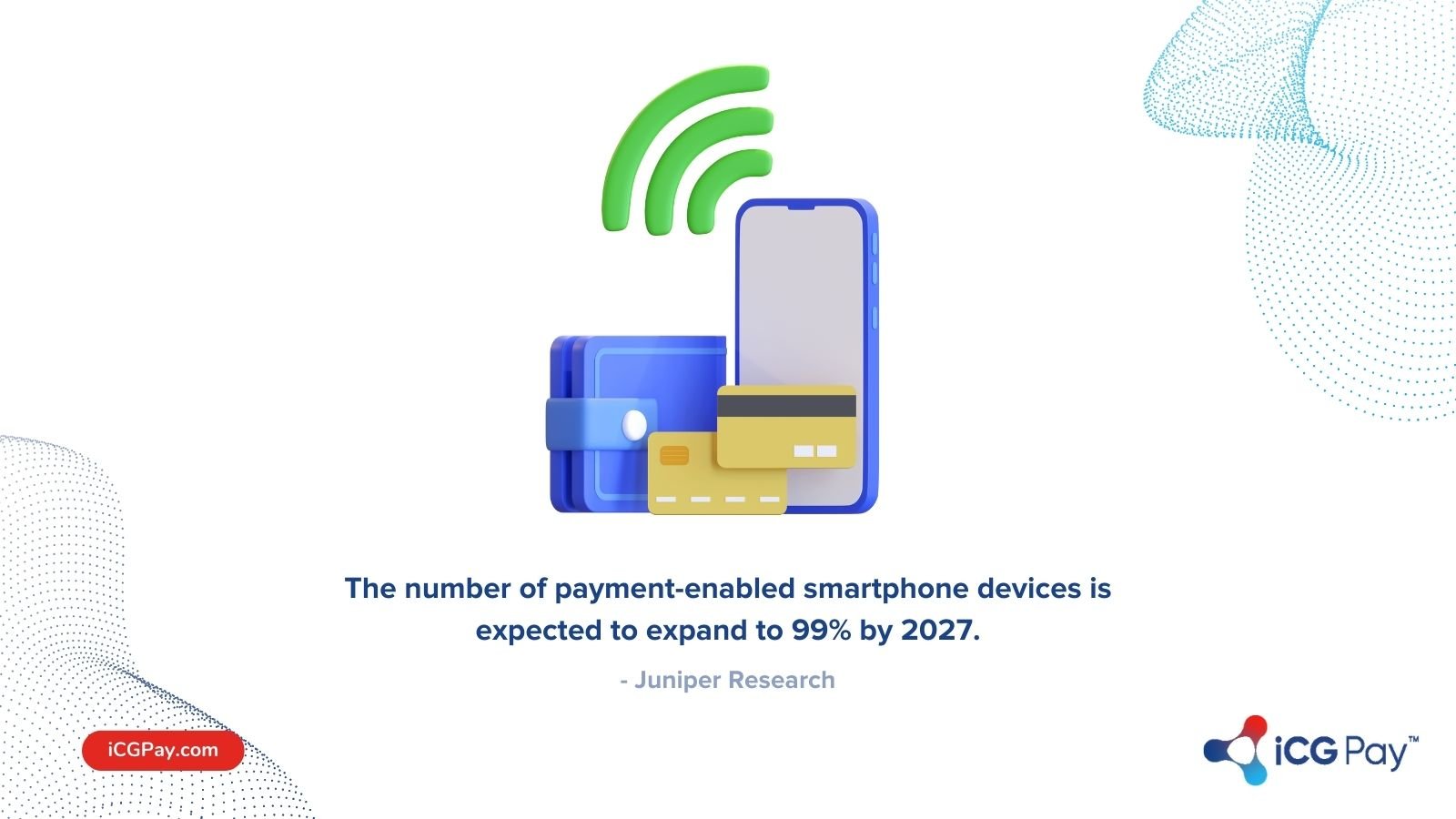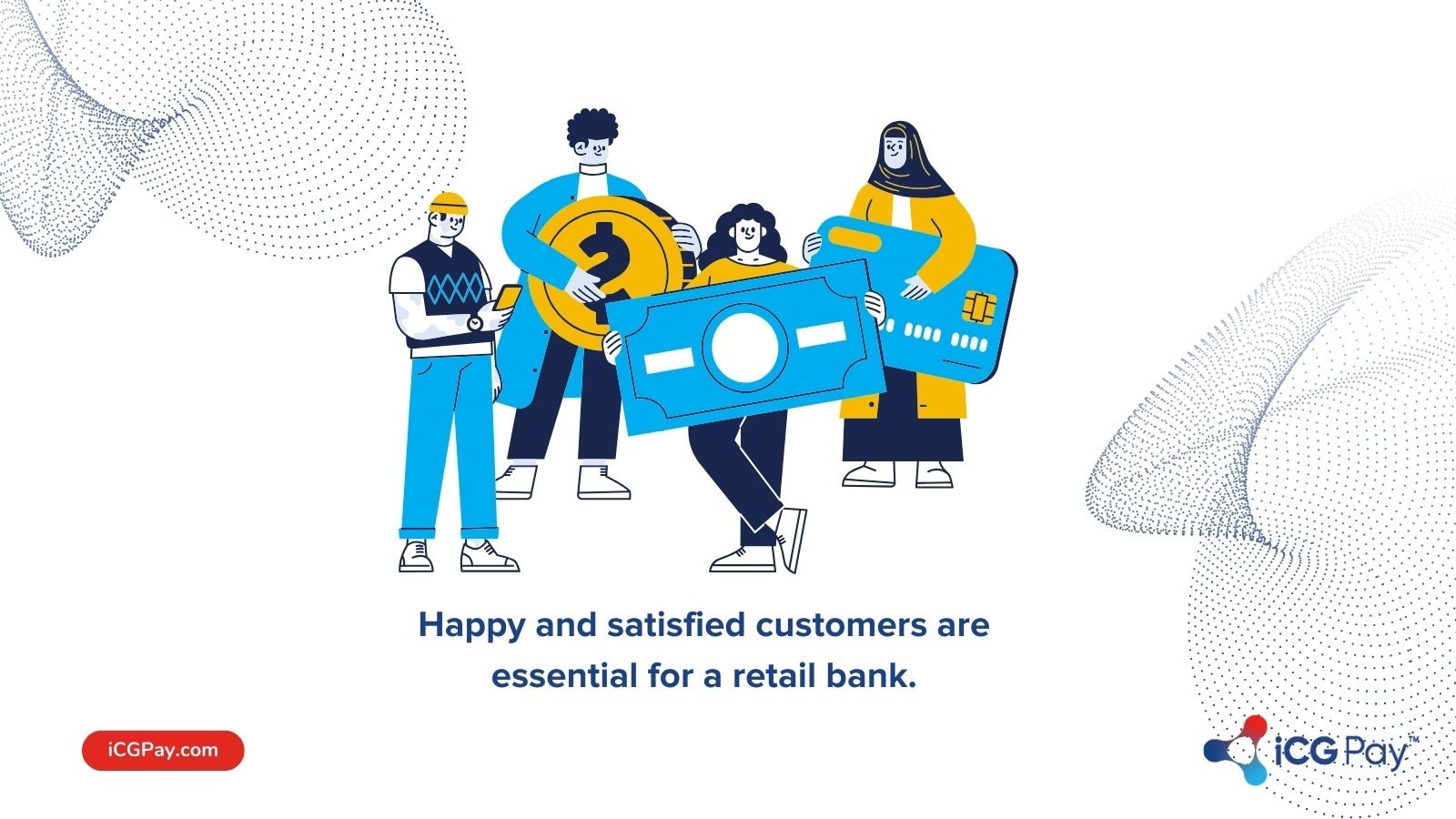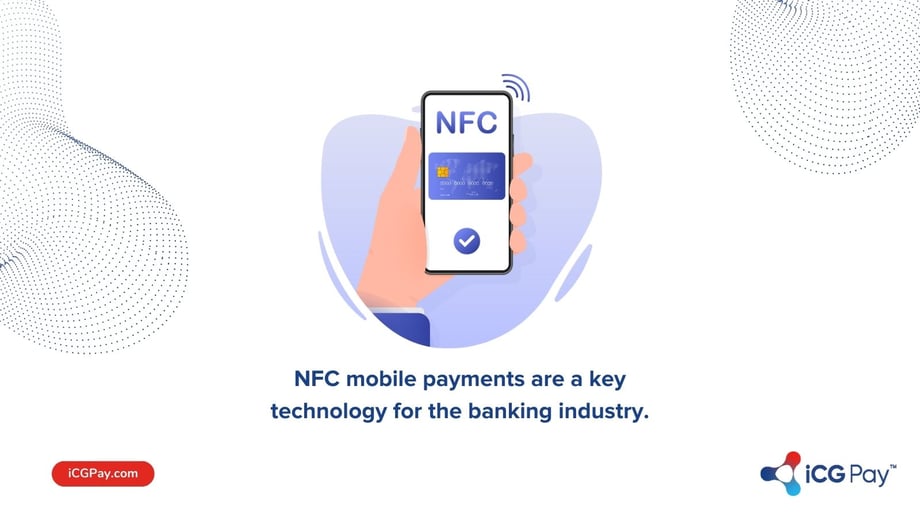Near-field communication (NFC) mobile payments are changing the face of retail and banking. While the first contactless card was introduced in 2004, it was not until 2020, during the pandemic, that there was a surge in these transactions.
Between 2020 and 2023, merchant industries such as eateries, gas stations, and grocery stores have been the leaders in adopting NFC payments.
At the same time, the retail banking industry is continuously embracing technological innovations that enhance efficiency, security, and overall customer experience. Among these advancements is NFC mobile payments. Integrating NFC technology transforms the banking experience for consumers and financial institutions.
Consumers today are looking for convenient and secure transactions while shopping. NFC mobile payments meet those needs and present multiple opportunities for retail banking institutions.
Here’s how NFC mobile payments work and benefit retail banking.
What Are NFC Mobile Payments?
Near Field Communication (NFC) mobile payments are a contactless method of conducting financial transactions using mobile devices equipped with NFC technology. NFC is a wireless communication technology that enables data exchange between devices within close proximity, typically four inches.
For mobile payments, NFC allows for the secure transfer of encrypted information between the user’s mobile device and the merchant’s point-of-sale (POS) terminal. The prevalence of mobile wallets has surged in recent times, contributing to the increased use of NFC mobile payments.
Statistics show that the number of payment-enabled smartphone devices is expected to expand to 99% by 2027. This shift toward NFC payments is because consumers want convenience and security.
They also want to utilize their mobile devices and leverage services like Apple Pay and Google Pay while paying at a point-of-sale (POS) system that supports both card and mobile tap-to-pay functionalities.

How Do NFC Mobile Payments Work?
NFC mobile payments are one of the key developments in contactless technology. Compared to other traditional payment methods, they are highly secure and provide immediate processing. Since they work like radio-frequency identification (RFID) technology, consumers must place their mobile devices close to the payment reader.
Here's how NFC mobile payments typically work:
- Both the payer's mobile device and payment terminal must be equipped with NFC technology.
- The user initiates a payment by bringing their NFC-enabled mobile device close to the payment terminal or another NFC-enabled device.
- NFC technology enables a quick and secure exchange of information between the devices in close proximity. This information may include payment details, authentication data, and other relevant transaction information.
- The payment is authorized through a secure process, often requiring biometric authentication such as fingerprint recognition, facial recognition, or a personal identification number.
- Once authorized, the transaction is completed, and both parties receive confirmation.
How Do NFC Mobile Payments Benefit Retail Banking?
If you run a retail bank, you need to keep up with innovative payment trends. Integrating NFC mobile payments offers the following benefits:
Enhanced Security
Encryption and secure authentication protocols during NFC transactions significantly reduce the risk of fraud and unauthorized access. Unlike traditional payment methods that may involve physical cards or cash, NFC transactions are safeguarded using advanced security measures, such as tokenization and biometric authentication.
The close-range communication makes it hard for hackers to access sensitive financial information. Therefore, as a retail bank, you should offer services and mobile banking services that allow customers to use this secure transaction method.
Convenience
Mobile payments are dominating all sectors. In addition, digital wallets like Apple Pay and Google Pay are set to hit over 54% of all global e-commerce payment transactions in 2026. This growth is due to the demand for convenient payment methods.
With NFC mobile payments, consumers can tap their mobile devices and swiftly complete transactions without needing physical cards or cash. This streamlined process accelerates the checkout experience, reducing wait times and enhancing overall efficiency.
The convenience extends beyond in-store transactions, as users can make payments seamlessly through various channels, such as online purchases or peer-to-peer transfers. This ease of use attracts tech-savvy customers and contributes to the broader adoption of digital banking services.
Improved Customer Experience
Happy and satisfied customers are essential for a retail bank. The speed and simplicity of NFC mobile transactions contribute to a positive interaction at the point of sale, leaving customers satisfied with the efficiency of their banking services.
Additionally, the availability of multiple payment options, including NFC-enabled cards and mobile wallets, provides customers with flexibility. With these options, they can choose the methods that align with their preferences. This positions your bank as responsive to evolving consumer expectations.

Improved Operational Efficiency
The automation and digitization of NFC mobile transactions reduce the reliance on manual handling of cash and physical cards, minimizing the potential for errors. This efficiency extends to backend processes and the adoption of NFC technology. It also integrates seamlessly with a bank's existing infrastructure.
The reduced need for physical documentation and manual record-keeping contributes to a more efficient and cost-effective operational model.
How Can You Integrate NFC Mobile Technology in Your Retail Bank?
Contactless transactions like NFC mobile payments are a key technology for the banking industry. To integrate this technology into your retail bank, here are the steps to get you started:
- Evaluate Compatibility: It’s essential to comprehensively evaluate the existing infrastructure and systems. Assess the compatibility of your current point-of-sale (POS) terminals, ATMs, and other banking equipment to ensure they support NFC functionality. This way, you can identify necessary upgrades or modifications required to seamlessly incorporate NFC technology into your operations.
- Choose a Reliable Technology Partner: Look for partners with a proven track record in developing and implementing payment technologies in the financial industry. Collaborate with a partner like iCG Pay, formerly iCheckGateway.com, who can provide API implementation support and other tools to help you process NFC mobile payments.
- Communicate with Customers: Once you have the systems in place, inform and educate the consumers and retailers about your services. This will attract customers looking for convenient payment options.

Embrace Contactless Payments Today
Retail banks that invest in NFC technology position themselves at the forefront of innovation by responding to evolving customer needs. NFC mobile payments address the current demands for speed, security, and convenience.
Through integration and collaboration with technology partners like iCG Pay, retail banks can harness the full potential of NFC mobile payments. Our suite of payment options empowers banks to offer the best payment services.
Reach out to our top payment processing experts to get started.

.jpg)

